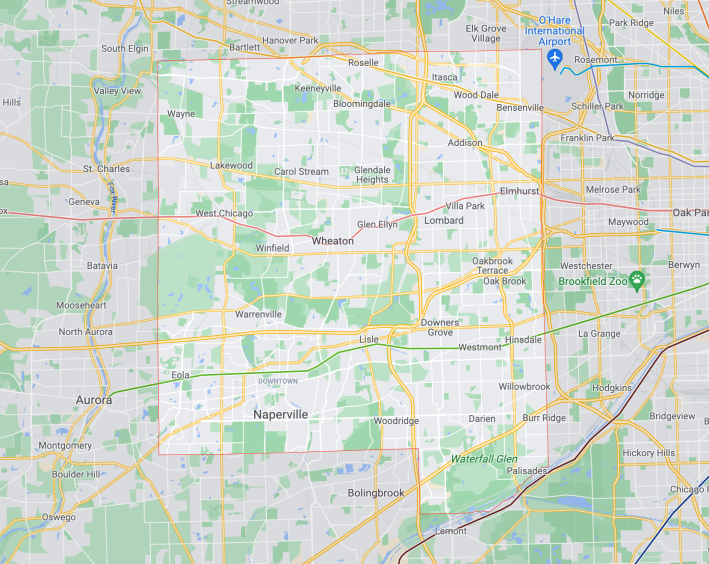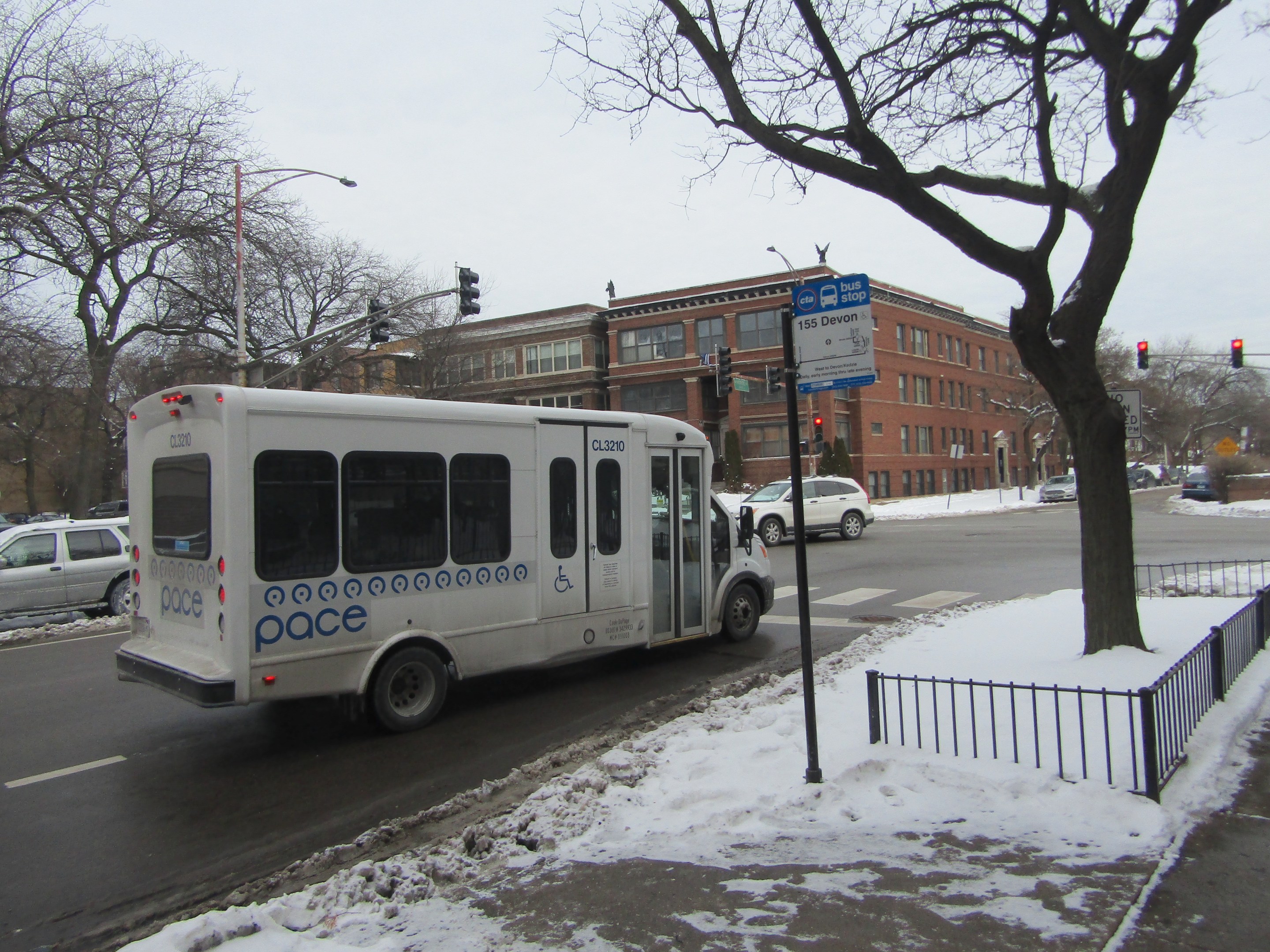DuPage County residents who are eligible for Pace’s ADA Paratransit services can now take $30 worth of Uber rides a day for free under the new DuPage Access Program.
On January 19, Pace's board approved a $1.1 million, one-year contract with Uber that took effect on January 31. Modeled after the Taxi Access Program Pace operates in Chicago, it is designed to supplement and expand Pace’s ADA Paratransit services in DuPage County.
Since the rules of the paratransit program dictate that buses only provide service within three quarters of a mile of a fixed bus route or a Metra line (although it serves all areas within the entire six-county region that meet this criteria) there are several service gaps, especially in the northwestern portion of the county. In contrast, DuPage Access can be used anywhere in the county (although it can't be used outside the county.) Riders who don't have a smartphone to hail an Uber driver via the app can call a dispatcher via a regular phone.
Just like with the TAP program, DuPage Access users can’t take more than eight trips a day, even if they haven’t used up their $30. However, while the paratransit program uses fully accessible minibuses, Uber drivers often use non-accessible cars, which limits the utility of the DAP program for people who use wheelchairs and other large mobility devices.
The state of DuPage County transit
Metra’s BNSF, Union Pacific West, and Milwaukee District West lines run through Dupage County. Naperville, the fourth largest city in Illinois, traditionally had multiple Metra feeder routes and fixed routes, but, with most of the feeder routes suspended since the spring of 2020, the service is a lot less extensive than it used to be. Pace service tends to vary a great deal depending on the municipality. Suburbs like Downers Grove, Elmhurst, Glen Ellyn, and Wheaton have multiple bus routes, many of which connect to multiple Metra lines. Oakbrook Terrace, which has no Metra service, has multiple Pace bus routes, while suburbs such as upscale Hinsdale and more working-class West Chicago have Metra stations but no Pace bus service. A handful of suburbs, such as the village of Wayne, have no fixed route transit service whatsoever.

The county does have 11 dial-a-ride programs for seniors and people with disabilities, but it is something of a smorgasbord of fares and restrictions on how far the services go and what kind of trips they make.
Both Pace buses and Metra trains have wheelchair ramps/lifts and other ADA-compliant features, making them viable options for riders in wheelchairs. The ADA Paratransit buses were meant to supplement those services by providing easier door-to-door connections and filling in schedule gaps. But this also means that paratransit service has been constrained by the proximity to fixed-route service. Furthermore, the fact that the buses often pick up several riders at once became a problem during the pandemic (more on that in a moment.)
During the January 19 board meeting, director Thomas Marcucci, who represents DuPage County, said that he has seen how the current Pace paratransit rules leads to situations where one rider can book a paratransit trip, but someone only a two blocks away can’t because they live outside the three-quarter-mile boundary. “I [heard about] an unfortunate situation like that in Elmhurst, and it took a while to solve the problem. All the gentleman wanted to do is go to the Elmhurst Metra station to go downtown to shop.”
Pace’s 2022 budget includes about $6 million to set up TAP-style pilot programs in the suburbs, working with ride-hail providers instead of taxi companies “to provide an alternative to fixed-route service for riders.” But while the budget described it as a service for all riders, the DuPage pilot is specifically described as a paratransit service.
How the DuPage Access Pilot works
Normally the TAP program charges riders $3 a trip, with Pace reimbursing the taxi company for the portion of the fare that goes above that on the rider’s behalf. But during the pandemic, the shared nature of the paratransit bus trips became a health risk, so Pace made the TAP taxi trips free to encourage more riders to use that option.
According to the presentation shared during the January 19 meeting, waiving the $3 had the intended effect of replacing multi-rider paratransit bus trips with single-rider taxi trips for social distancing purposes. While TAP trips accounted for 10 percent of all paratransit trips in 2019, that number went up to 23 percent in 2020 and 33 percent in 2021. The presentation also mentioned that TAP trips were cheaper for Pace. While an average TAP trip cost $25, an average minibus paratransit trip cost $73.
That said, Pace interim director Melissa Metzger told the board that the TAP program’s growth has been hampered by how hard the pandemic hit the taxi industry, and the industry still hasn't fully recovered. “The taxi numbers went way down. They're starting to build back up, but they're not in the capacity as they were before the pandemic.”
As with the current TAP trips, riders don’t get charged for DuPage Access trips. According to the program page, the eligibility for the program is determined based on names and addresses on file with the RTA for paratransit service. Paratransit riders who already have Uber accounts automatically get the $30 a day credit applied to their accounts. Those who don’t have Uber accounts will get the credit applied once they get one. If any issues arise, Pace is asking riders to send their contact information using a form on the program page.
As noted during the January 19 meeting, Uber already provides similar kind of paratransit services in Washington, D.C., Boston, and other cities.
Pace officials said riders who don’t use smartphones will be able to book their trips using a third-party dispatching service. The contact information for service that wasn’t up on the DuPage Access program page as of February 6.
Marcucci said that he didn’t believe that ride-hail companies hurt ridership Pace routes (although a city of Chicago study found that ride-hail trips did divert ridership from the CTA), arguing that Uber and Lyft fill the gaps in Pace service, and that the pilot would make Uber “part of our total service package.”
Pace board chairman Richard Kwasneski also said he supports the program. “Public-private partnerships like this will be the key to building our service back better. We’ll take what we learn in DuPage and use it to implement similar pilots in other areas.”
Metzger said that industry-wide driver shortage hasn’t spared Pace’s paratransit division, and the Uber pilot will help address it. “We don't have enough drivers. We're interested in [having] as many different options as possible to keep the service available for our customers.”





